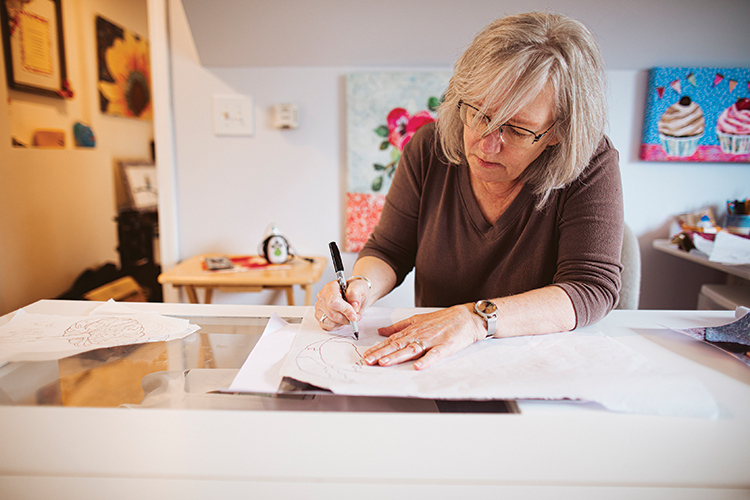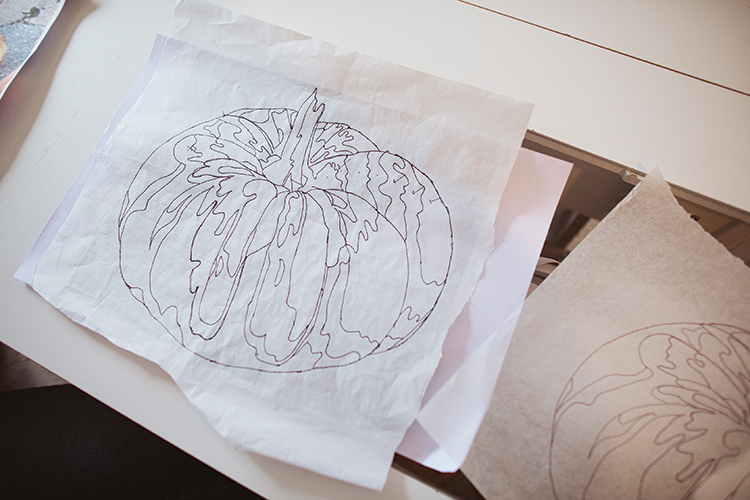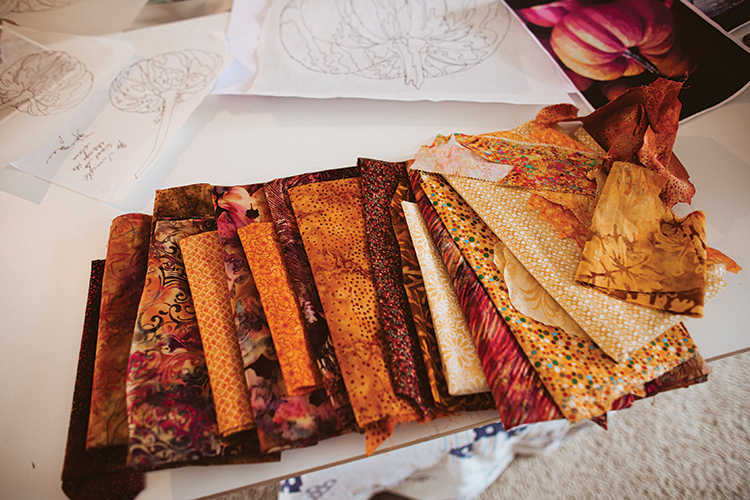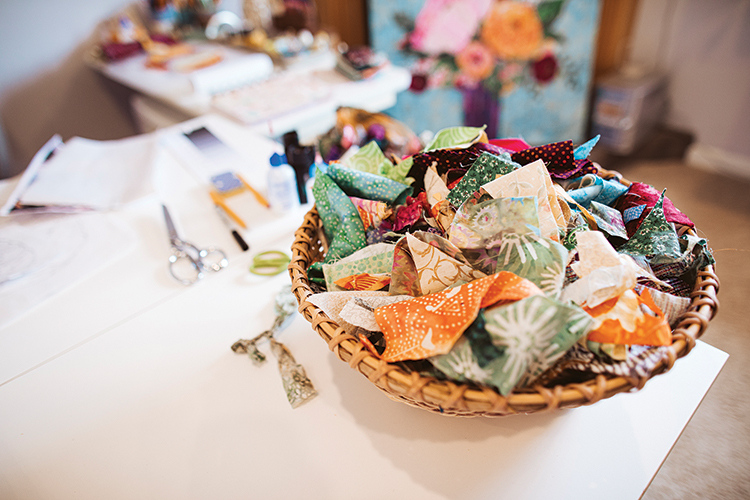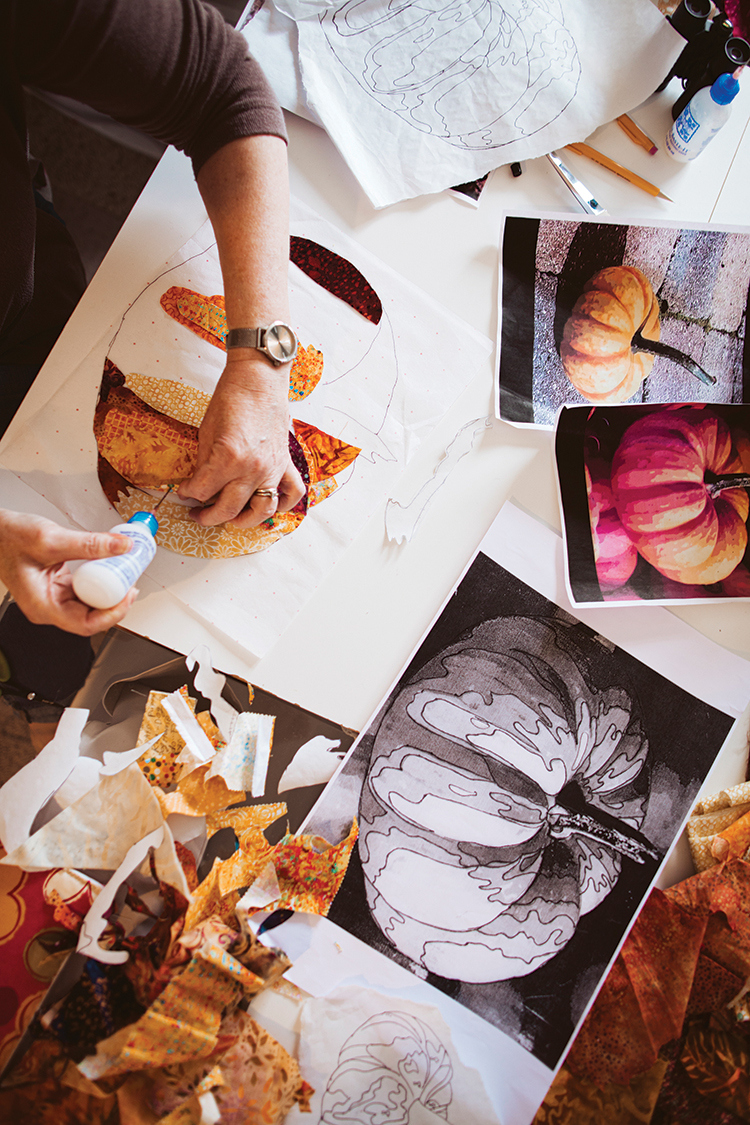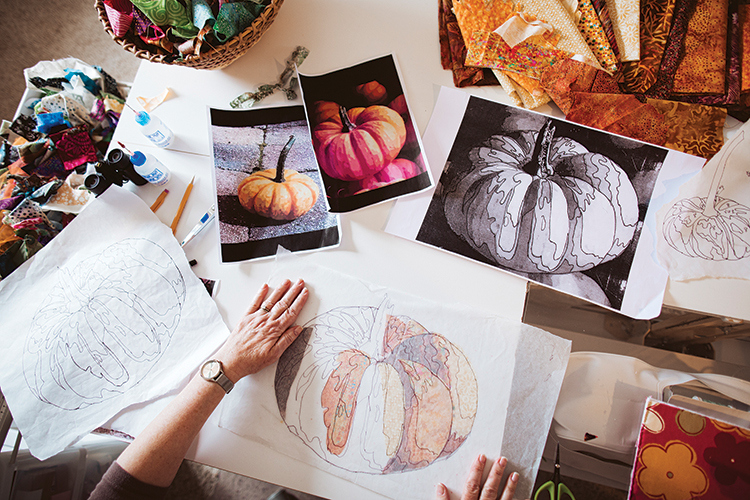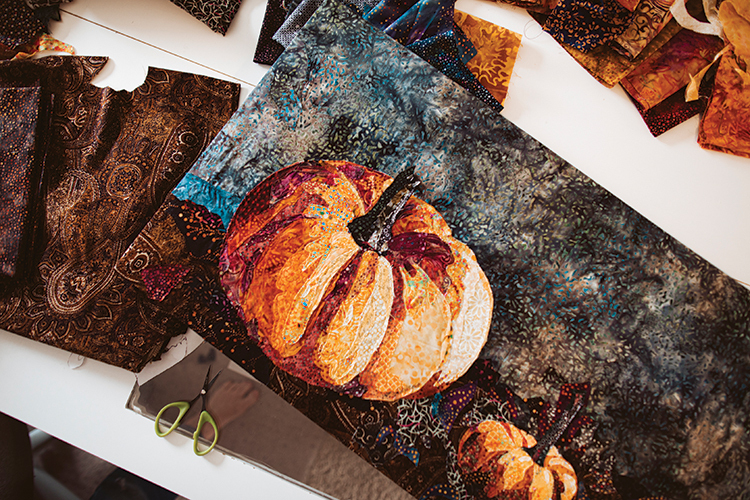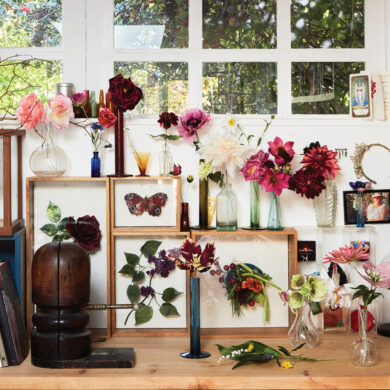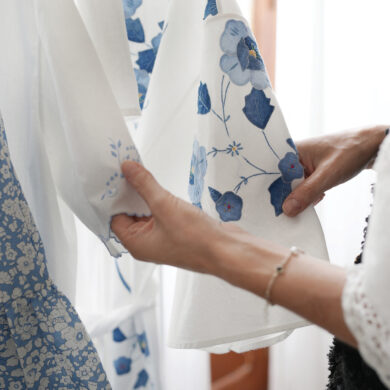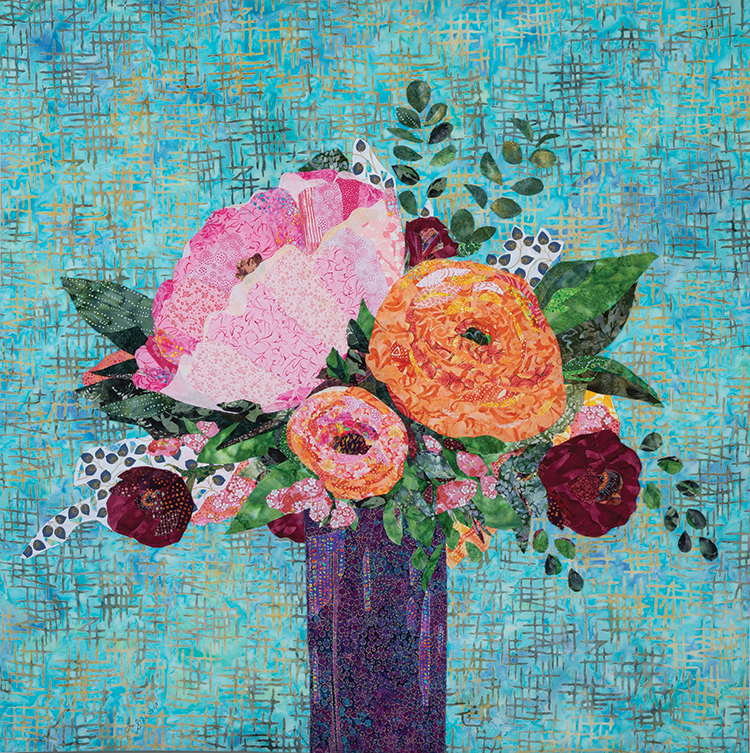
The Journey
Like many artists, I began creating at an early age. As a young child, a box of crayons, some blank sheets of paper and a pencil with an eraser could keep me happy for hours. Actually, that’s still true today.
I grew up in a large family. I am the youngest of nine, with four brothers and four sisters. I never went to college, and I didn’t have any formal education in art. But what I did have were parents, grandparents, aunts and uncles, and brothers and sisters who were creative and curious. My world was enriched with crafters, quilters, woodworkers, doll makers, poets and musicians. Whether it was out of necessity (which was quite often the case at our house) or the sheer joy of making, someone was always creating something.
Not only were my parents creative, but they were also hardworking. I grew up knowing the importance of both getting a good job and doing a good job. After graduating from high school, I spent the next 40-plus years working at good jobs that required very little creativity. During that time, I continued my crafting hobbies. My interests varied, but one thing remained a constant: I was always happiest when I was using my imagination as well as my hands. Eventually, quilt-making became my favorite hobby and purchasing fabric became my second. I poured my heart into each quilt and enjoyed every minute of it. Until one day when everything changed.
On this particular fine day in 2014, my husband, David, and I were headed to a quilt show, which was being held in a beautiful garden setting. We followed the path into the garden, and there, strung between cherry-picker ladders and hung on potting-shed walls, were the most beautiful, non-traditional quilts I had ever seen. This show was full of “art quilts,” something I had never heard of before. I knew right then I wanted to learn everything I could about them!
Like many forms of art, there are a variety of styles and techniques for making art quilts. They can be made with fabric, paint, embroidery stitches, beading or found objects. There really is no limit. The method I use is both simple and challenging. I use only fabric and thread.
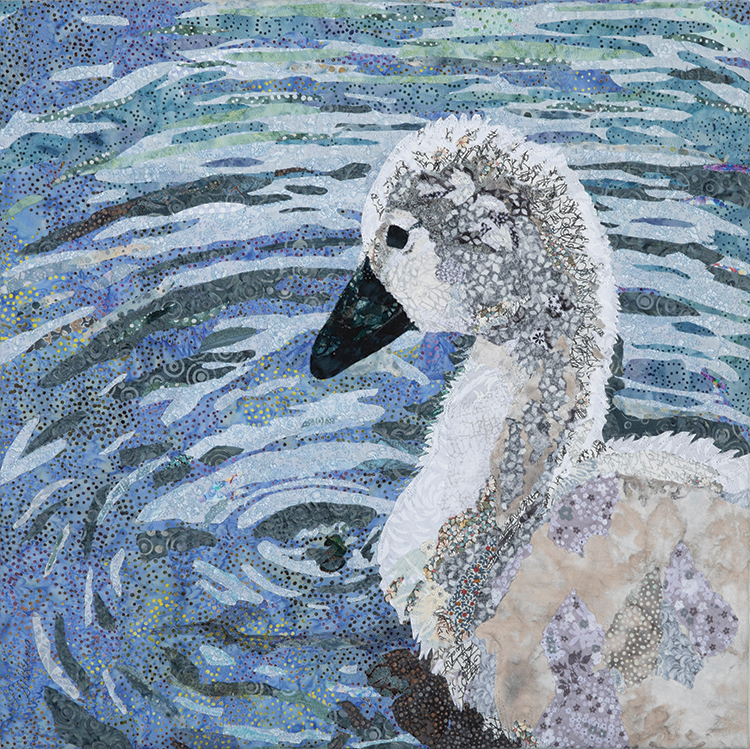
The moment I created my first art quilt, I was absolutely hooked. Over time, I learned which techniques I enjoyed and which ones I didn’t. To my surprise, I discovered that quilting the finished piece was my least favorite part. So, in 2017, I made the decision to eliminate the quilting portion of the process and use only functional stitches to keep all the fabric pieces secure. It was at this same time that I began wrapping my artwork over stretched canvas. Technically, by definition, I was no longer creating art “quilts.”
After being a quiltmaker for so long, I wasn’t quite sure where I would fit in anymore, but the changes were worth it. I loved the way the artwork hung on the wall; and they were quicker to finish, which meant I could begin my next one that much sooner.
“It’s not just about creativity, it is about the person you’re becoming while you’re creating.”
— Charles Peacock
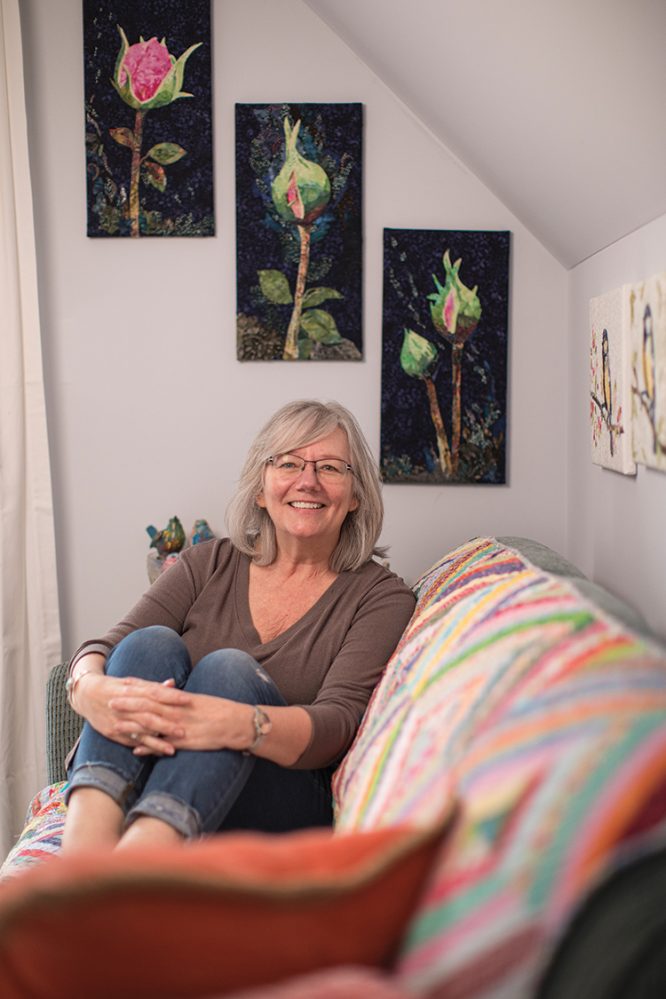
With each piece I created, I gained more confidence in my work. But there were days when insecurities would weave their way inside my head. Having no formal education in art, I felt like an imposter. I still lacked the confidence to consider myself a “real” artist.
There were also days when I would question the purpose of all the artwork that was filling up my studio. Knowing this, my niece suggested I listen to a podcast in which Rachel Hollis, author of Girl, Wash Your Face, stated the following: “When you’re creating something from your heart, you do it because you can’t not do it. You create as a gift to yourself and to the higher power who blessed you with those abilities.”
Those words made such a difference to me. It felt as though a weight had been lifted, and from that moment on, I no longer questioned my art’s purpose. I would continue to create with a happy and grateful heart.
As I continued to spend time in my studio, I would find myself talking out loud, explaining (to no one) the steps to creating a fabric collage. I would catch myself discussing fabric choices or scale and values. Sometimes, my husband would overhear me and ask who I was talking to. Over time, I came to realize that not only did I want to share my work, but I really wanted to share the process, too.
So, in April of 2019, I held my first workshop. It took many hours of preparation for my husband and me to formulate a class outline and list the necessary steps to make it happen. We chose a venue with high ceilings and lots of windows for good natural lighting. It was our living room. Not only was it convenient, but it was also affordable!
The workshop turned out to be loads of fun and was a big success. As I stood on the loft to take a quick photo of the classroom below, I was reminded of something I had written back in 2015: “I would like to be in a big room full of people creating their art. A room full of messy, heavenly stuff. A room full of inspiration, with quiet moments and crazy moments. A room full of accomplishments and works in progress. I’m pretty sure that room would have lots of windows and very high ceilings.”
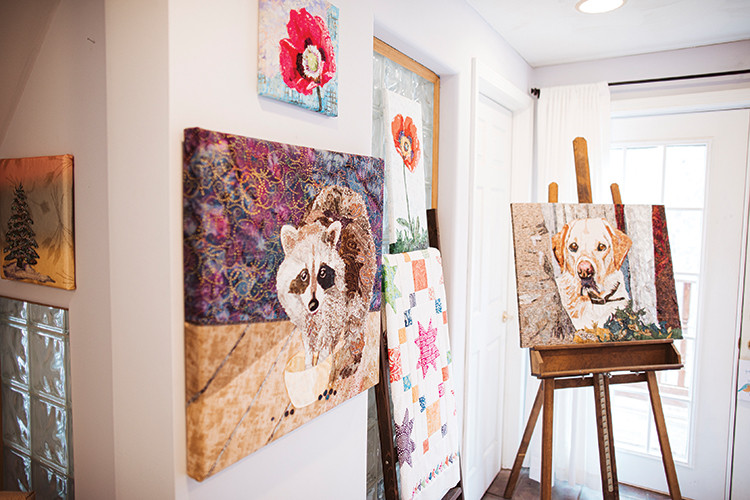
Was this a premonition? I don’t know. At the time, it just seemed like a lovely dream. But on this day, it was a dream come true.
Two months later, I found myself inside the gallery of the Crooked Tree Arts Center in Traverse City. I had set out that morning to wander through the garden across the street. Unfortunately (or fortunately), the garden was closed that day. I crossed the cobblestone street to wander through the art gallery instead. That’s where I met Kristi Wodek. We chatted about art exhibits and quilt shows. I told her about my journey to making art quilts and fabric collage. I shared photos of my artwork, and I even had the courage to share my interest in teaching.
Call it luck, or serendipity, or the universe working its magic, but it turned out that Kristi was the education and outreach director for the Crooked Tree Arts Center. And before I knew it, we were scheduling my next fabric collage workshop!
Since I began creating fabric art, I have had the opportunity to teach multiple workshops. I’ve had articles published in magazines, and my art quilts have been juried and exhibited in international quilt shows. I’ve had the pleasure of showing my fabric collage art in group exhibits, both locally and regionally. And last year, I had the extreme honor of my first solo art exhibit. My dreams for the future include teaching more workshops and retreats, taking on commissioned work and inspiring other women to be courageous and believe in themselves.
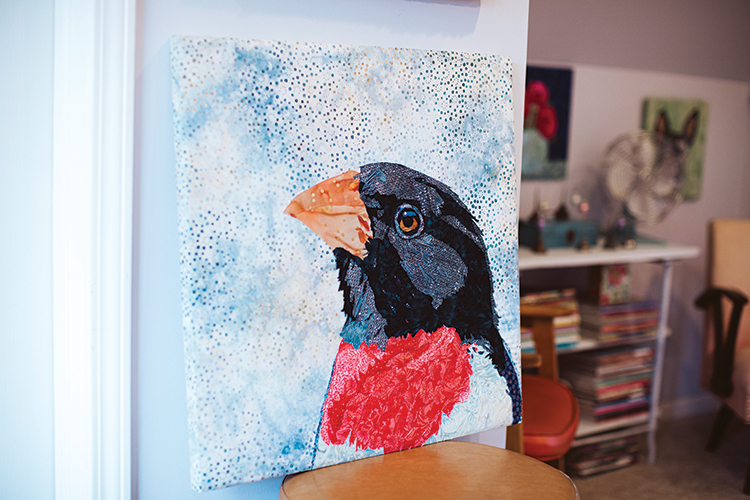
Triumphs and Challenges
Some of my biggest triumphs were actually small things, but they all had a common thread: They required courage. For example, showing my artwork to anyone who wasn’t a close relative. Hitting the “send” button in hopes of being accepted into an exhibit. Raising my hand to ask a question in a room full of artists. Sending an email off to a publisher. And my biggest challenge, which became my biggest triumph: finally believing that I didn’t need an art degree to be an artist.
The Process
Before I begin playing in the fabrics, I spend quite a bit of time creating my pattern. Using a photograph as my guide, I work to capture all the details clearly and to the proper scale. This step is imperative for a successful outcome. (I learned this early on the hard way.)
Once the pattern is complete, it will resemble a paint-by-numbers.
The next step is choosing fabrics for my palette. I use batiks and commercial cottons with unexpected prints and patterns. If there is text on it, that’s even better! Fabrics are chosen for both their color and value. The subtle changes in values are what create dimension and bring the artwork to life. But it’s the use of unexpected prints that adds the extra elements of surprise and whimsy. (Like using a print with little flowers on it to create the ears of a well-loved hunting dog.) Searching through my fabric stash and finding those magical pieces is my favorite part of the process.
Creating the collage is now a matter of tracing the pattern to make templates, then using the templates on individual pieces of fabric to cut out shapes. Some shapes are cut in a more freestyle manner, without the use of a template. The fabric shapes, like brushstrokes, are layered onto the collage. Fabric glue is used to temporarily hold everything together.
Once the design is complete, I use a technique called raw edge appliqué to stitch the fabric pieces securely. The final step is to wrap the artwork over stretched canvas.
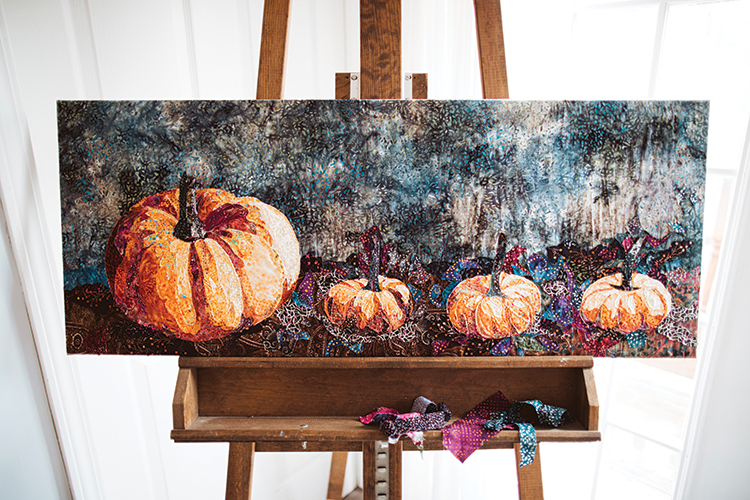
“Everything you want is on the other side of fear.”
— Jack Canfield

The Journey
Like many artists, I began creating at an early age. As a young child, a box of crayons, some blank sheets of paper and a pencil with an eraser could keep me happy for hours. Actually, that’s still true today.
I grew up in a large family. I am the youngest of nine, with four brothers and four sisters. I never went to college, and I didn’t have any formal education in art. But what I did have were parents, grandparents, aunts and uncles, and brothers and sisters who were creative and curious. My world was enriched with crafters, quilters, woodworkers, doll makers, poets and musicians. Whether it was out of necessity (which was quite often the case at our house) or the sheer joy of making, someone was always creating something.
Not only were my parents creative, but they were also hardworking. I grew up knowing the importance of both getting a good job and doing a good job. After graduating from high school, I spent the next 40-plus years working at good jobs that required very little creativity. During that time, I continued my crafting hobbies. My interests varied, but one thing remained a constant: I was always happiest when I was using my imagination as well as my hands. Eventually, quilt-making became my favorite hobby and purchasing fabric became my second. I poured my heart into each quilt and enjoyed every minute of it. Until one day when everything changed.
On this particular fine day in 2014, my husband, David, and I were headed to a quilt show, which was being held in a beautiful garden setting. We followed the path into the garden, and there, strung between cherry-picker ladders and hung on potting-shed walls, were the most beautiful, non-traditional quilts I had ever seen. This show was full of “art quilts,” something I had never heard of before. I knew right then I wanted to learn everything I could about them!
Like many forms of art, there are a variety of styles and techniques for making art quilts. They can be made with fabric, paint, embroidery stitches, beading or found objects. There really is no limit. The method I use is both simple and challenging. I use only fabric and thread.

The moment I created my first art quilt, I was absolutely hooked. Over time, I learned which techniques I enjoyed and which ones I didn’t. To my surprise, I discovered that quilting the finished piece was my least favorite part. So, in 2017, I made the decision to eliminate the quilting portion of the process and use only functional stitches to keep all the fabric pieces secure. It was at this same time that I began wrapping my artwork over stretched canvas. Technically, by definition, I was no longer creating art “quilts.”
After being a quiltmaker for so long, I wasn’t quite sure where I would fit in anymore, but the changes were worth it. I loved the way the artwork hung on the wall; and they were quicker to finish, which meant I could begin my next one that much sooner.
“It’s not just about creativity, it is about the person you’re becoming while you’re creating.”
— Charles Peacock

With each piece I created, I gained more confidence in my work. But there were days when insecurities would weave their way inside my head. Having no formal education in art, I felt like an imposter. I still lacked the confidence to consider myself a “real” artist.
There were also days when I would question the purpose of all the artwork that was filling up my studio. Knowing this, my niece suggested I listen to a podcast in which Rachel Hollis, author of Girl, Wash Your Face, stated the following: “When you’re creating something from your heart, you do it because you can’t not do it. You create as a gift to yourself and to the higher power who blessed you with those abilities.”
Those words made such a difference to me. It felt as though a weight had been lifted, and from that moment on, I no longer questioned my art’s purpose. I would continue to create with a happy and grateful heart.
As I continued to spend time in my studio, I would find myself talking out loud, explaining (to no one) the steps to creating a fabric collage. I would catch myself discussing fabric choices or scale and values. Sometimes, my husband would overhear me and ask who I was talking to. Over time, I came to realize that not only did I want to share my work, but I really wanted to share the process, too.
So, in April of 2019, I held my first workshop. It took many hours of preparation for my husband and me to formulate a class outline and list the necessary steps to make it happen. We chose a venue with high ceilings and lots of windows for good natural lighting. It was our living room. Not only was it convenient, but it was also affordable!
The workshop turned out to be loads of fun and was a big success. As I stood on the loft to take a quick photo of the classroom below, I was reminded of something I had written back in 2015: “I would like to be in a big room full of people creating their art. A room full of messy, heavenly stuff. A room full of inspiration, with quiet moments and crazy moments. A room full of accomplishments and works in progress. I’m pretty sure that room would have lots of windows and very high ceilings.”

Was this a premonition? I don’t know. At the time, it just seemed like a lovely dream. But on this day, it was a dream come true.
Two months later, I found myself inside the gallery of the Crooked Tree Arts Center in Traverse City. I had set out that morning to wander through the garden across the street. Unfortunately (or fortunately), the garden was closed that day. I crossed the cobblestone street to wander through the art gallery instead. That’s where I met Kristi Wodek. We chatted about art exhibits and quilt shows. I told her about my journey to making art quilts and fabric collage. I shared photos of my artwork, and I even had the courage to share my interest in teaching.
Call it luck, or serendipity, or the universe working its magic, but it turned out that Kristi was the education and outreach director for the Crooked Tree Arts Center. And before I knew it, we were scheduling my next fabric collage workshop!
Since I began creating fabric art, I have had the opportunity to teach multiple workshops. I’ve had articles published in magazines, and my art quilts have been juried and exhibited in international quilt shows. I’ve had the pleasure of showing my fabric collage art in group exhibits, both locally and regionally. And last year, I had the extreme honor of my first solo art exhibit. My dreams for the future include teaching more workshops and retreats, taking on commissioned work and inspiring other women to be courageous and believe in themselves.

Triumphs and Challenges
Some of my biggest triumphs were actually small things, but they all had a common thread: They required courage. For example, showing my artwork to anyone who wasn’t a close relative. Hitting the “send” button in hopes of being accepted into an exhibit. Raising my hand to ask a question in a room full of artists. Sending an email off to a publisher. And my biggest challenge, which became my biggest triumph: finally believing that I didn’t need an art degree to be an artist.
The Process
Before I begin playing in the fabrics, I spend quite a bit of time creating my pattern. Using a photograph as my guide, I work to capture all the details clearly and to the proper scale. This step is imperative for a successful outcome. (I learned this early on the hard way.)
Once the pattern is complete, it will resemble a paint-by-numbers.
The next step is choosing fabrics for my palette. I use batiks and commercial cottons with unexpected prints and patterns. If there is text on it, that’s even better! Fabrics are chosen for both their color and value. The subtle changes in values are what create dimension and bring the artwork to life. But it’s the use of unexpected prints that adds the extra elements of surprise and whimsy. (Like using a print with little flowers on it to create the ears of a well-loved hunting dog.) Searching through my fabric stash and finding those magical pieces is my favorite part of the process.
Creating the collage is now a matter of tracing the pattern to make templates, then using the templates on individual pieces of fabric to cut out shapes. Some shapes are cut in a more freestyle manner, without the use of a template. The fabric shapes, like brushstrokes, are layered onto the collage. Fabric glue is used to temporarily hold everything together.
Once the design is complete, I use a technique called raw edge appliqué to stitch the fabric pieces securely. The final step is to wrap the artwork over stretched canvas.

“Everything you want is on the other side of fear.”
— Jack Canfield






